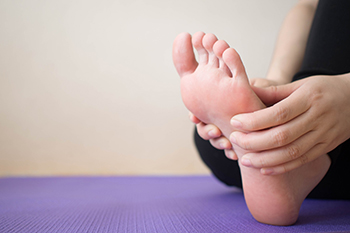
Every year about one quarter of older adults experience a fall, which is the leading cause of injury in people aged 65 and above. Specific physical changes, including muscle weakness, balance problems, and declining vision, can contribute to the risk of falling. As one ages, navigating stairs, curbs, and loose carpeting can become increasingly difficult. In addition, chronic conditions such as arthritis and diabetes can negatively affect balance, coordination, and stability. Additionally, some medications commonly taken by seniors, such as blood pressure or other ailments, can cause dizziness or drowsiness that further increases the risk of falling. Balance and strength training exercises, tai chi, and yoga are a few options seniors have that may help to decrease the likelihood of a fall. Flexibility training exercises to increase the range of motion and reduce stiffness can help improve reaction times. Using an assistive device, such as a walker or cane, is another way to help seniors become more stable on their feet. For further information about the prevention of falls, it is suggested that you make an appointment with a podiatrist.
Preventing falls among the elderly is very important. If you are older and have fallen or fear that you are prone to falling, consult with one of our podiatrists from Foot Health Center of Merrimack Valley. Our doctors will assess your condition and provide you with quality advice and care.
Every 11 seconds, an elderly American is being treated in an emergency room for a fall related injury. Falls are the leading cause of head and hip injuries for those 65 and older. Due to decreases in strength, balance, senses, and lack of awareness, elderly persons are very susceptible to falling. Thankfully, there are a number of things older persons can do to prevent falls.
How to Prevent Falls
Some effective methods that older persons can do to prevent falls include:
- Enrolling in strength and balance exercise program to increase balance and strength
- Periodically having your sight and hearing checked
- Discuss any medications you have with a doctor to see if it increases the risk of falling
- Clearing the house of falling hazards and installing devices like grab bars and railings
- Utilizing a walker or cane
- Wearing shoes that provide good support and cushioning
- Talking to family members about falling and increasing awareness
Falling can be a traumatic and embarrassing experience for elderly persons; this can make them less willing to leave the house, and less willing to talk to someone about their fears of falling. Doing such things, however, will increase the likelihood of tripping or losing one’s balance. Knowing the causes of falling and how to prevent them is the best way to mitigate the risk of serious injury.
If you have any questions, please feel free to contact one of our offices located in North Andover, and Tewksbury, MA . We offer the newest diagnostic and treatment technologies for all your foot care needs.










